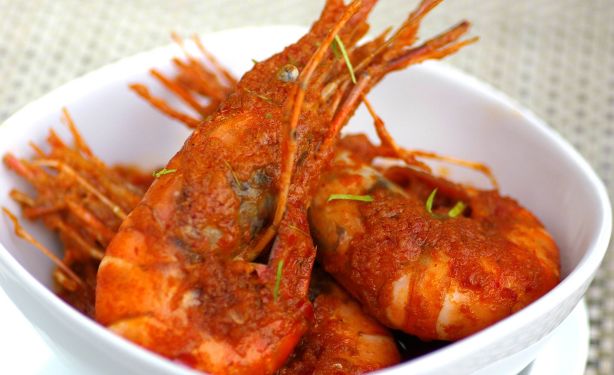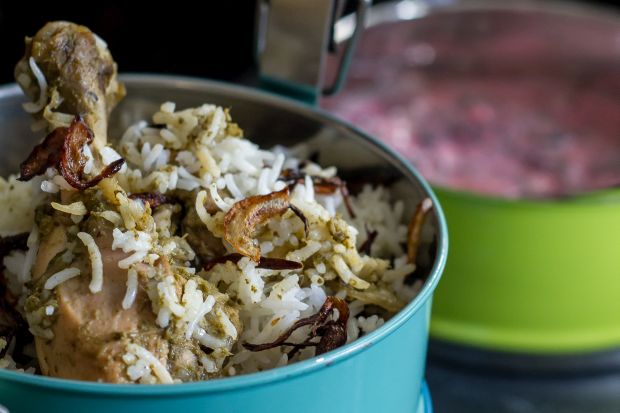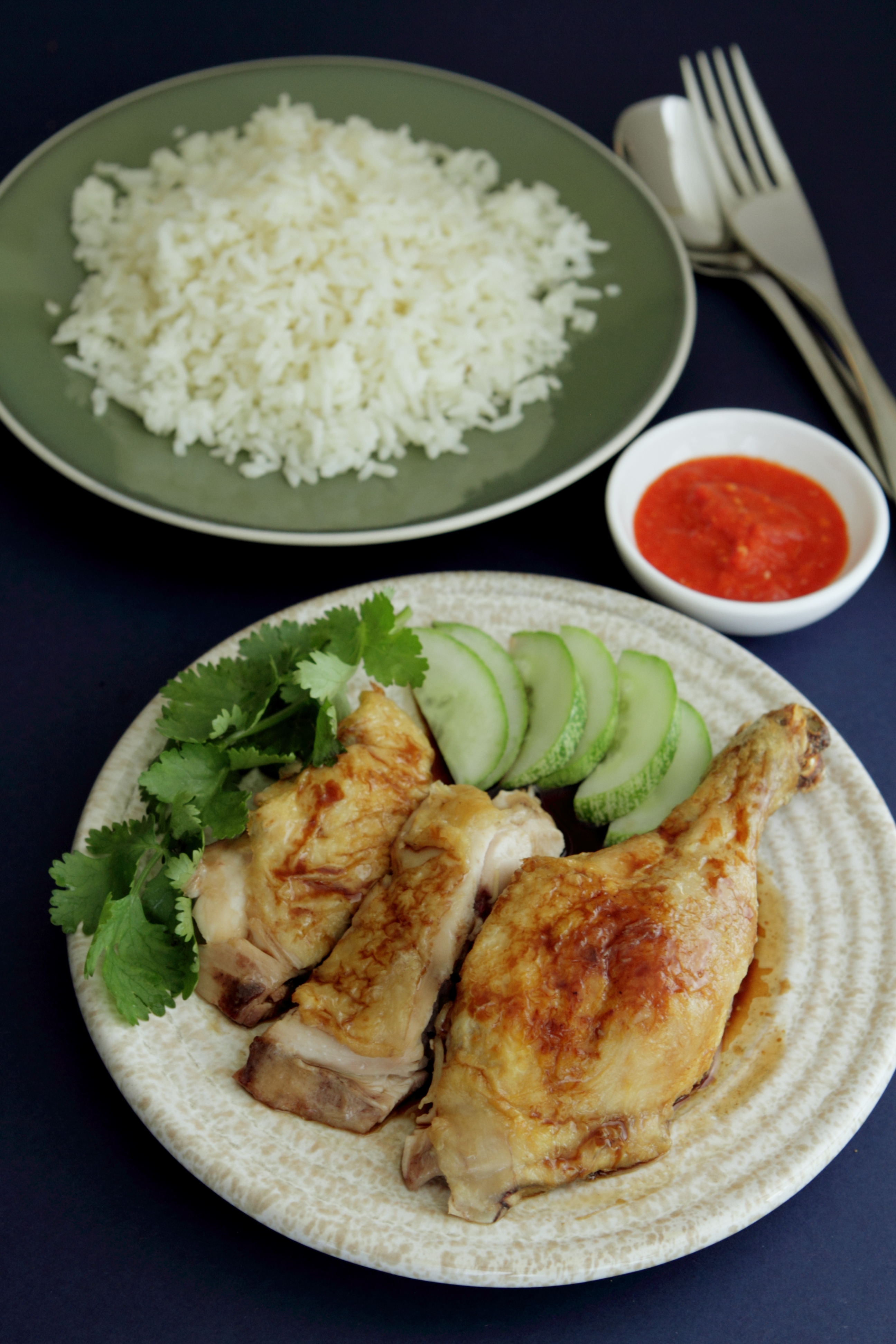Most people can regale you with nostalgic tales of their mother’s food, and the associated smells, sights and sounds resonant of the maternal culinary processes. Few can recall men in the family being able to reproduce these same recipes.
And nowhere is this more evident than with Malay heritage recipes, many of which are the direct byproduct of enterprising women utilising ingredients indigenous to the areas they grew up in.
But with the passage of time, this matriarchal culinary system is being phased out, as many modern women simply do not have either the time or the inclination to cook traditional food.
It is why some families are discovering that contrary to convention, it is the boys who are becoming the custodians of traditional Malay recipes.
Son-thing old
In their family home in Semenyih, Selangor, Suriaty Embong, 63, is putting the finishing touches to a traditional dish. Standing right by her side is her son Amin Hakim, 21, who watches his mother intently before furtively adding an ingredient or two to round the dish out.
In many ways, this close-knit culinary connection has been growing and blooming for years now, as Suriaty has been determined to teach the classic Terengganu dishes she learnt from her grandmother to Amin, her youngest child (one of two boys).

Because his mother is getting on in age, Amin has taken over the daily cooking and even makes all the family’s heirloom recipes for gatherings and festivals. Photo: The Star/Samuel Ong
Growing up in Terengganu, Suriaty learnt how to cook by watching her grandmother, a fabulous cook. By 10, she was so eager to cook herself that she would often seek out leftover ingredients and concoct her own dishes.
“When my grandmother wasn’t at home, I was always surreptitiously experimenting in the kitchen. I would take whatever was left over after she cooked and cuba-cuba (experiment),” she says, laughing at the recollection.
From her grandmother, Suriaty learnt how to make traditional dishes like nasi dagang, nasi minyak and ayam percik, meals that she replicated when she moved to KL for a job opportunity.
Even as a young working professional, heritage dishes were always on her mind and at one point, she even entered a national Maggie cooking competition, ending up in fifth place for a classic Malay dish.

Suriaty has taught Amin how to make all the traditional Terengganu dishes that she grew up with, like laksam (pictured here). Photo: The Star/Samuel Ong
Once she got married and had her two sons, Suriaty became even more determined to pass down her precious recipes.
“I don’t have daughters, so I feel like I must pass these recipes down to my sons. My sons are particular about food. They don’t like eating out because I always cook, so somehow they are not satisfied with outside food.
“So if I don’t teach them these traditional dishes, they won’t know how to make them when I’m not around,” she says.
And once you try Suriati’s traditional Terengganu dishes, you’ll quickly understand why her sons love her food. Her laksam for example, is fantastic – an interplay of pillowy soft rice rolls interspersed with fresh local ulam, a fiery sambal and a pleasantly mellow kuah. In combination, these diverse ingredients form total and utter deliciousness.
“Laksam Terengganu is my grandmother’s authentic recipe. I’ve loved eating laksam since I was little, because the kuah is not spicy, so normally little kids like it. The thing about laksam is nowadays people don’t make it at home – they don’t know how to,” laments Suriaty.
Suriaty’s deliciously full-flavoured kerutuk itik is another heirloom recipe that she still makes to this day, as it has festive, celebratory connotations.
“We make it for weddings and for buka puasa during Ramadan. In Terengganu, people will cook the duck eggs as well,” she says.
Now that Suriaty is getting on in age, she herself doesn’t cook as much. But all the years she spent teaching her sons has proven worthwhile, as Amin now does the day-to-day cooking.
“I learnt how to cook by watching my mum. She doesn’t have recipes – everything is to taste, secukup rasa or ikut rasa, so I estimate too but the only difference is I use spoons instead of my hands,” says Amin, laughing.
These days, Amin is able to make many of his mother’s prized heirloom dishes like nasi minyak and nasi dagang. In fact, he has become so adept at cooking that he even cooks for kenduris and other festivals!
“My mother is getting older, and cooking can be tedious, so I have taken over and am the main cook, even for family functions. But I am going overseas soon to further my studies, so my older brother and I have decided that he will take over the cooking until I get back,” says Amin.
For her part, Suriaty is both relieved and thrilled to know that her culinary legacy will live on in her sons.
“Both my sons like to cook, but Amin is the most interested. And I feel that nowadays people don’t want to make these dishes, so I’m happy knowing that my boys want to cook this food and will be able to continue making them when I am not around,” she says, smiling.

LAKSAM TERENGGANU
Serves 4 to 5
For the laksam
1 cup rice flour
1/2 cup wheat flour
2 tbsp cornflour
4 cups warm water
For the kuah laksam
5 red onions, minced
2 cloves garlic
1 tsp coarse black pepper
2.5cm belacan
2 cups coconut milk
3 grilled sardines, deboned and blended
1 asam keping
1 tbsp sugar
1 tsp salt
For the sambal
3 red chillies
4 bird’s eye chillies (cili padi)
5cm belacan
1 limau kasturi, juiced
For the herbs
1 cucumber, sliced thinly
100g taugeh
4 sprigs daun kesum, sliced thinly
1 torch ginger bud, sliced thinly
2 long beans, sliced lengthwise
To make the laksam
Combine all the flours in a large bowl. Add warm water and mix until the mixture comes together and is not lumpy.
Spread cooking oil on a flat plate. Put 2 cups of dough onto the plate, place in a steamer and steam until done, about 3 minutes.
Remove dough from the steamer and set aside until cold.
Roll steamed dough out, then and cut every 1.2cm and roll into mini rolls. Repeat until dough is finished (this should yield 10 rolls).
To make kuah laksam
Blend onions, garlic, pepper and belacan.
Put blended ingredients and coconut milk into a large pot.
Stir to combine, then add sardines, asam keping, sugar and salt and cook until mixture reaches a boiling point.
To make the sambal
Blend chillies and belacan until mixture is smooth. Top with lime juice and stir to combine.
To assemble
Place rolls on plate. Pour kuah laksam over rolls and top with sambal and herbs. Toss everything together and eat.
 KERUTUK ITIK
KERUTUK ITIK
Serves 4
For the duck
1/2 duck
3 tbsp wheat flour
1 tsp salt
For the kerutuk
3 cups coconut milk
2 tbsp blended red onion
3 cloves garlic, blended
2.5cm ginger, blended
3 lemongrass, blended
5 tsp chilli paste
4cm belacan
salt to taste
4cm gula Melaka
2 tbsp tamarind juice
4 duck eggs, boiled
3 red chillies, for garnishing
To prepare the duck
Put water in a pot and add wheat flour. Soak duck in the water for 15 to 30 minutes to get rid of the smell. Rinse with clean water and coat duck in turmeric powder.
Dry duck over open flame until there are no fine hairs on the duck and it is completely dry. Then marinate duck with salt.
To prepare the kerutuk
In a pot, add coconut milk, blended onions, garlic, ginger, lemongrass, chilli paste and belacan. Stir to combine, then add salt, gula Melaka and tamarind juice.
Cook mixture till boiling, then add duck and boiled eggs and cook until the mixture thickens and the oil separates. Garnish with chilli.
From boys to men
In his spotless kitchen, Razif Sidek, 52, and his three children – Mohd Danial Ahmad Razif, 23, Mohd Danish Ahmad Razif, 21 and Mohd Darwish Ahmad Razif, 14 – are hard at work.
The boys are bustling around like seasoned pros. Danial ladles curry onto a plate held steady by younger brother Danish. Darwish, meanwhile is laying the table for dinner.
“Boys, please make sure you set out the forks and spoons and fill the water glasses too,” says Razif, as the kids nod in unison.

Razif (second from left) has taught his three sons (from left): Danish, Danial and Darwish how to make Malay recipes he inherited from his mother and grandmother because he wants them to get passed down to the next generation. Photo: The Star/Art Chen
This charming scenario is a daily event in Razif’s household as he has trained all three of his sons to work together to create the heritage Malay dishes that he himself learnt as a child.
“I grew up with seven siblings and I learnt how to cook from my mother and grandmother. My grandmother was the quality controller in the house and my mother is the sort of person who doesn’t care if you’re a boy or a girl – you have to help in the kitchen,” he says.
Because Razif’s mother supplemented her income as a hospital attendant by making and selling Malay food, Razif and his siblings were often tasked with helping to prepare these meals. When Razif was 13, his grandmother became ill and couldn’t cook, so he started cooking for the family in earnest.
“I started from there and it became part and parcel of my daily life,” he says.
In fact, to help earn money for his education, Razif actually made nasi lemak which he sold in KL Hospital where his mother worked.
Even after he started working as a lawyer, got married and had his three sons, he continued cooking every single day.
“When my babies started eating solid food, I was the one who prepared it and froze it for them,” he says, laughing.

Razif learnt how to cook when he was very young, because in his home, his mother didn’t treat boys any different from girls and so everyone had to help out in the kitchen. Photo: The Star/Art Chen
When his sons were in their early teens, he began teaching them how to cook the Malay heritage food that he grew up with, derived from his mother’s Minangkabau and Pahang roots.
“I want them to continue the tradition to make sure that the dishes that we have won’t be lost and will survive to the next generation.
“The only problem with traditional food is that it’s very tedious. But to me, in the modern age, you can simplify it. Like previously you had to use the batu giling, but now you can use a blender, so I am teaching my sons simpler ways of cooking traditional food,” says Razif.
Razif cited Rendang Minang, a delicious, aromatic coconut-infused beef dish that he inherited from his mother who in turn, inherited it from her mother.
“For this recipe, the meat is boiled first in the rice cooker until tender, then it is cut and sliced thinly. The reason behind it is because my grandmother wanted to cut short the cooking process. Rendang normally takes three hours, but our recipe doesn’t even take one hour,” he says.
Razif’s ayam sambal balado meanwhile is a fuss-free dish accentuated by the spicy underpinnings of copious amounts of fresh red chillies, tomatoes and onions.
“It only has three ingredients and is very simple. I remember when I introduced the dish to my ex-mother-in-law years ago, she called it masak senang (easy cooking),” says Razif.
Razif’s eldest son Danial says he and his brothers can now whip up all sorts of family heirloom dishes like ayam berlado and masak lemak cili api, skills which he finds extremely useful now that he is older.
“We’ve been learning how to cook from my dad for years, so my brothers and I now work together to make family meals during the weekends.
“We have grown up in this family, so it’s good to see boys cooking. I think all the boys in the family have an interest in cooking – it’s in the blood. And these days I really feel the importance of learning the family’s traditional food because it shows us where we come from,” he adds.

AYAM SAMBAL BERLADO
Serves 8 to 10
1 chicken, cut into small pieces
turmeric, for marinating chicken
salt to taste
1kg fresh red chillies
250g red tomatoes
850g red onions
Marinate chicken with turmeric and salt and set aside.
Roughly pound the red chillies, tomatoes and onions and set aside.
Heat a wok and deep-fry chicken till golden brown. Use the remaining oil to fry the pounded red chillies, tomatoes and onions. Saute the mixture till the chilli is cooked and turns dark red. Add more salt if necessary.
Remove excess oil from the mixture and add the fried chicken. Toss sambal with chicken until well coated and serve hot.

RENDANG MINANG
Serves 8 to 10
For the beef
1kg beef
For blending together with beef stock
350g red onions
100g ginger
50g galangal
50g fresh turmeric
5 stalks lemongrass
5 cloves garlic
1 turmeric leaf
For cooking
100ml vegetable oil
300g chilli paste
800ml coconut cream
50g kerisik (toasted, grated coconut)
salt to taste
1 piece asam gelugor (optional)
palm sugar to taste
1 turmeric leaf, sliced thinly
3 kaffir lime leaves, sliced thinly
In a rice cooker, boil beef till tender. Set beef stock aside. Cut beef into bite-sized pieces.
Blend all the ingredients with the beef stock and set aside.
Heat up vegetable oil in a wok and saute the chilli paste over low heat until you get pecah minyak (the oil separates). Add blended mixture and continue to saute till fragrant. Add the beef pieces and remaining beef stock (if any) and cook over medium heat.
Add the coconut cream and kerisik. Cook until the beef absorbs the flavours of the spices thoroughly and the colour turns dark brown. Add in salt, asam and palm sugar to taste.
Turn off the heat and garnish with sliced turmeric leaves and kaffir lime leaves.







